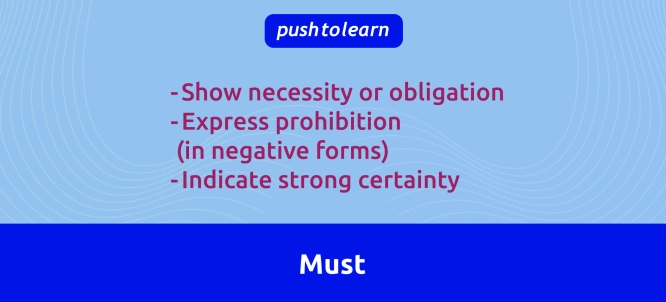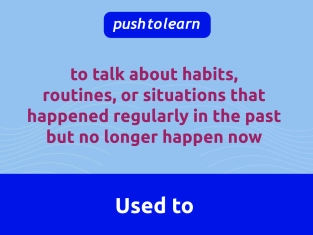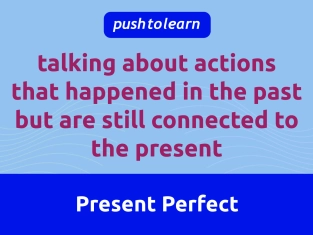by PushtoLearn
Verbo Modal "Must": Reglas, Uso y Ejercicios
Tabla de contenidos
Verbo Modal "Must" – Ejercicios
Estos ejercicios se centran en "Must"
¿Qué es "Must"?
"Must" es un verbo modal que se usa para:
-
Indicar necesidad u obligación
-
Expresar prohibición (en formas negativas)
-
Señalar certeza fuerte
Al igual que todos los verbos modales, "must" va seguido de la forma base del verbo principal.

Usos de "Must"
1. Necesidad u Obligación
Se usa "must" para hablar de algo que es necesario o requerido.
Ejemplos:
You must wear a seatbelt in the car.
Students must complete their homework on time.
2. Prohibición
En oraciones negativas, "must not" (o "mustn’t") se usa para expresar algo que está prohibido.
Ejemplos:
You mustn’t smoke in the hospital.
We mustn’t enter this area without permission.
3. Certeza Fuerte
Se usa "must" para expresar una creencia fuerte o una conclusión basada en evidencia.
Ejemplos:
He must be the new teacher; he’s sitting at the teacher’s desk.
You must be tired after such a long journey.
Reglas para el uso de "Must"
-
"Must" siempre va seguido de la forma base del verbo (sin "to").
✅ Correcto: You must finish the report today.
❌ Incorrecto: You must to finish the report today. -
La forma negativa es "must not" o "mustn’t".
✅ Correcto: You mustn’t use your phone in class.
❌ Incorrecto: You don’t must use your phone in class. -
"Must" no cambia con el sujeto.
✅ Correcto: She must study. / They must study.
❌ Incorrecto: She musts study.
Errores Comunes con "Must"
|
Error |
Por qué es incorrecto |
Forma correcta |
|
You must to listen to me. |
"To" no es necesario después de "must". |
You must listen to me. |
|
He musts finish the work. |
"Must" no lleva "s". |
He must finish the work. |
|
We don’t must be late. |
Se debe usar "mustn’t" en lugar de "don’t must". |
We mustn’t be late. |
|
Must you to leave early? |
"To" no es necesario en preguntas. |
Must you leave early? |
Uso Cotidiano de "Must"
|
Situación |
Ejemplo |
|
Hablar sobre reglas |
You must show your ID at the door. |
|
Prohibir algo |
You mustn’t park here; it’s illegal. |
|
Expresar certeza |
She must be excited about her promotion. |
|
Dar un consejo formal |
You must visit the museum; it’s amazing! |
Diferencia entre "Must" y Otros Verbos Modales
|
Verbo Modal |
Uso |
Ejemplo |
|
Must |
Necesidad fuerte o certeza |
You must stop at the red light. |
|
Have to |
Necesidad (más común en conversación) |
You have to wear a uniform. |
|
Should |
Sugerencia o consejo |
You should exercise more. |
FAQ
¿Se puede usar "must" en el pasado?
No, para el pasado se usa "had to".
Ejemplo: I had to work late yesterday.
¿Cuál es la forma negativa de "must"?
La forma negativa es "must not" o "mustn’t".
Ejemplo: You mustn’t speak during the exam.
¿Cuál es la diferencia entre "must" y "have to"?
Ambos expresan necesidad, pero "must" suele ser más fuerte y formal. "Have to" es más común en el habla cotidiana.
Ejemplo:
-
You must be on time for the meeting (formal).
-
You have to finish this by tomorrow (lenguaje cotidiano).
¿Cómo se forma una pregunta con "must"?
Coloca "must" al inicio de la pregunta.
Ejemplo: Must I submit the form today?
¿"Must" es formal o informal?
"Must" es generalmente más formal que "have to", pero se puede usar en situaciones tanto formales como informales.

